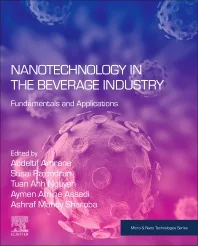2015 State of the Beverage Industry: Energy category impacted by other segments
Natural and organic varieties offer growth options
As beverage manufacturers get more creative in their product development, more beverages seem to be blurring the category lines. One category that has been both aided and challenged by this multi-platform approach is the energy category.
Jonas Feliciano, beverage analyst for Chicago-based Euromonitor International, told Beverage Industry in its August 2014 issues that non-alcohol beverages typically are broken into three categories: hydration, refreshment and function. Innovation from energy drink manufacturers has allowed the category to capitalize on the hydration and refreshment segments as well, he said.
Las Vegas-based Xyience capitalized on this trend through the launch of its Xenergy + line, which includes Xenergy + Hydration, Xenergy + Tea and Xenergy + Lemonade. Xenergy + Hydration is caffeine-free, but the other two varieties include 10 mg of caffeine in each ounce, the company says.
The concept of natural within the energy drinks market is one that could appeal to both consumers and retailers, experts note. But manufacturers also are going a step further with their innovation by developing energy drinks that are made with U.S. Department of Agriculture (USDA) certified organic ingredients.
Euromonitor’s Feliciano added that the natural and organic segment of energy drinks could pose a challenge to the category’s largest players — Fuschl Am See, Austria-based Red Bull and Corona, Calif.-based Monster Beverage Corp. — because they currently do not have products that play to that consumer base. However, he adds that the audiences for these brands contrast with that of Starbucks, which has a strong position in the segment.
However, just last month, The Coca-Cola Co. and Monster Beverage Corp. announced the closing of a strategic partnership related to an equity investment, business transfers and expanded distribution in the global energy drink category. As a result of the partnership, The Coca-Cola Co. now owns approximately 16.7 percent stake in Monster. Therefore, The Coca-Cola Co. made a net cash payment of approximately $2.15 billion to Monster.
In addition to natural and organic energy, today’s consumers are interested in flavorful energy drinks, Feliciano noted. He added that these flavor extensions can be important for retailers as they deal with competition from online portals and a decrease in overall soft drink consumption.
Energy shots account for roughly $1.1 billion of the overall $10.9 billion energy drink category, according Chicago-based Information Resources Inc. (IRI) data measuring multi-outlets during the 52 weeks ending May 17. Although it significantly trails behind the nearly $9 billion non-aseptic energy drink sub-category, energy shots still are the second-largest segment within the category.
“Energy shot growth has slowed in the last year due in large part to maturation,” said Chris Schmidt, industry analyst for consumer health at Euromonitor to Beverage Industry in its August 2014 issue. “The products have reached nearly ubiquitous distribution and consumer awareness. 5-hour Energy, in particular, seems to be dropping off, as it has lost its novelty luster and is becoming something of a commodity brand.”
Although energy shots have experienced contraction within the last few years, it is not a result of struggling to evolve with the consumer audience. “It’s hard to say whether there’s a core consumer group for energy shots anymore,” Schmidt said. “At first, they were positioned as the adult version of flashy energy drinks, but that’s not really the case anymore.”
Although energy has been at the core of the messages surrounding energy shots, Euromonitor’s Schmidt noticed that some marketing also focuses on claims for cognitive effects. This approach likely will be a key component in advertising going forward as the segment looks to recover from its contraction.
Although the overall energy drinks category was up 6.9 percent to $10.9 billion in the 52 weeks ending May 17, according to IRI data, this single-digit increase is in contrast to double-digit increases in years past, experts note.
Looking for a reprint of this article?
From high-res PDFs to custom plaques, order your copy today!






